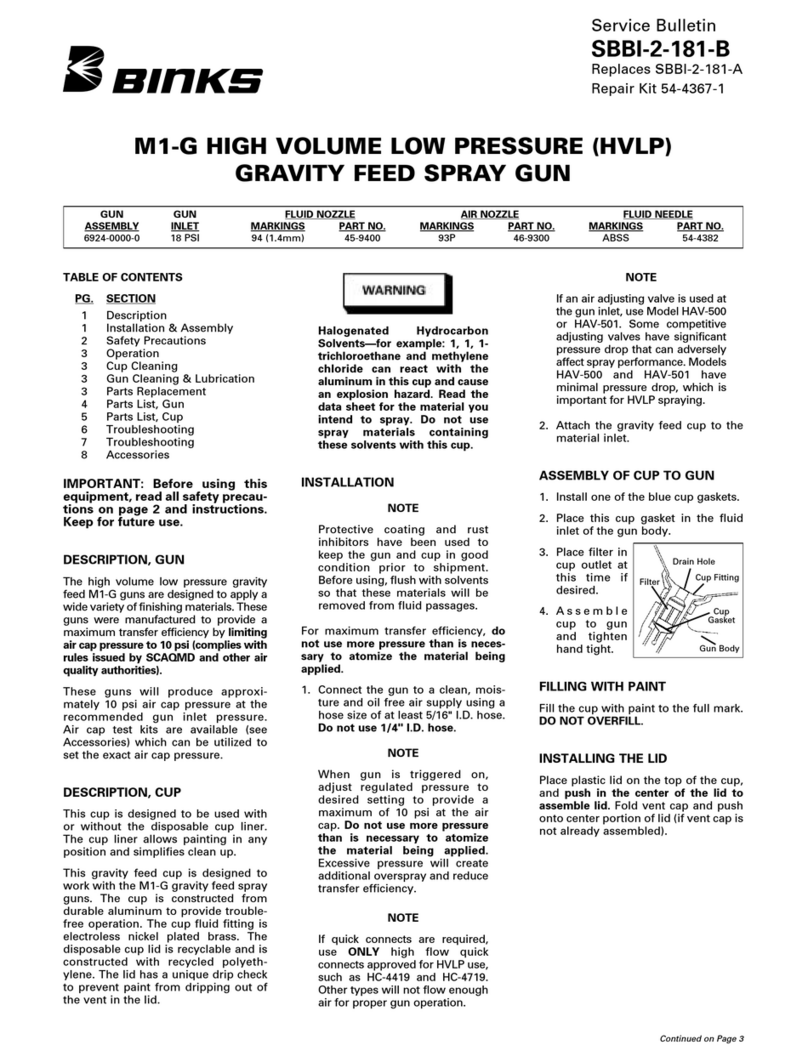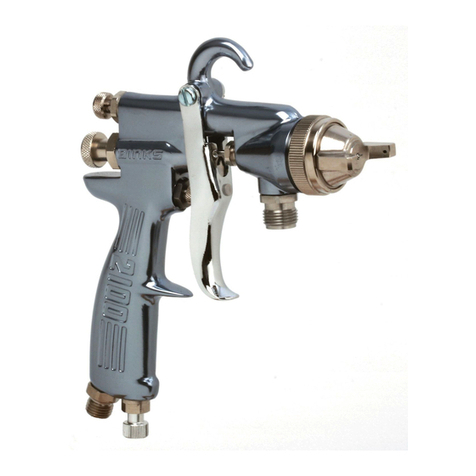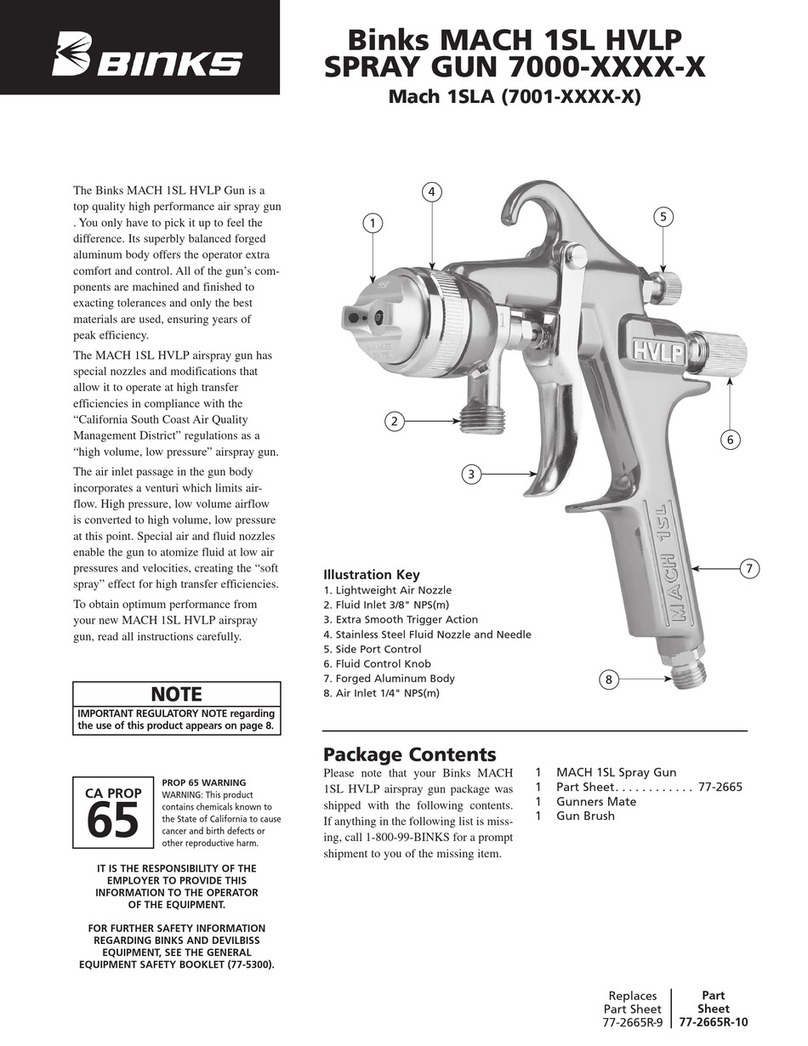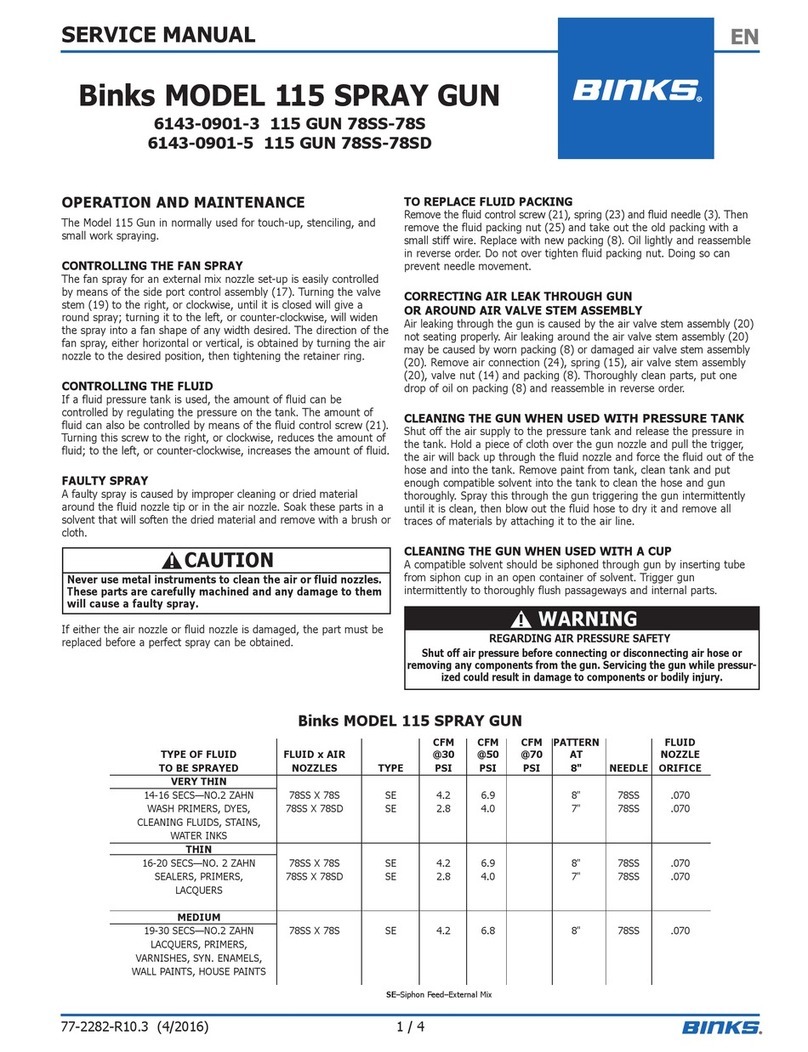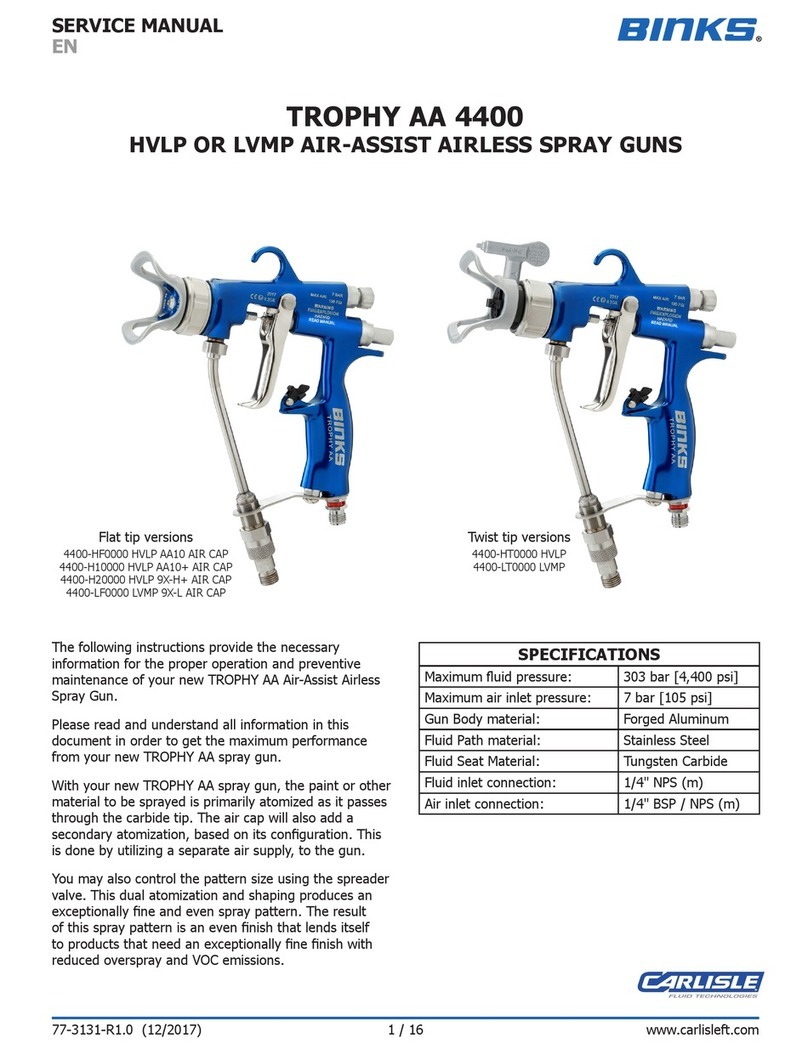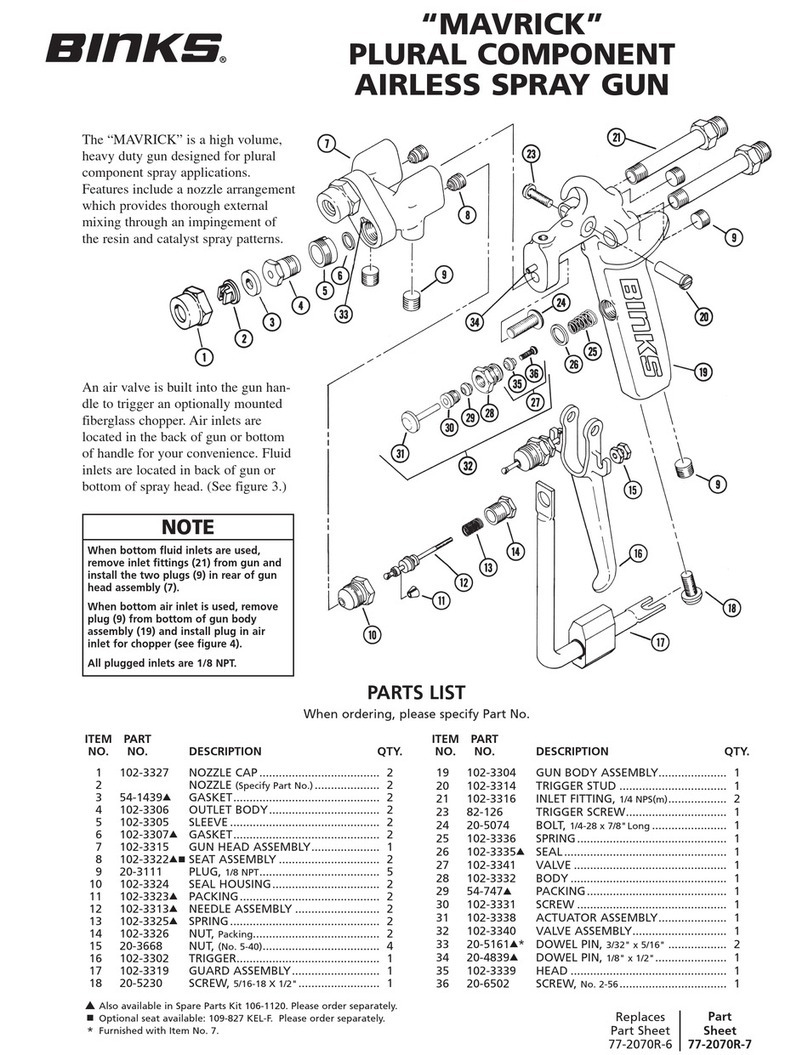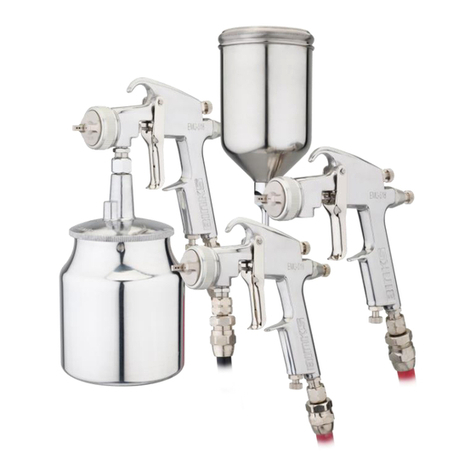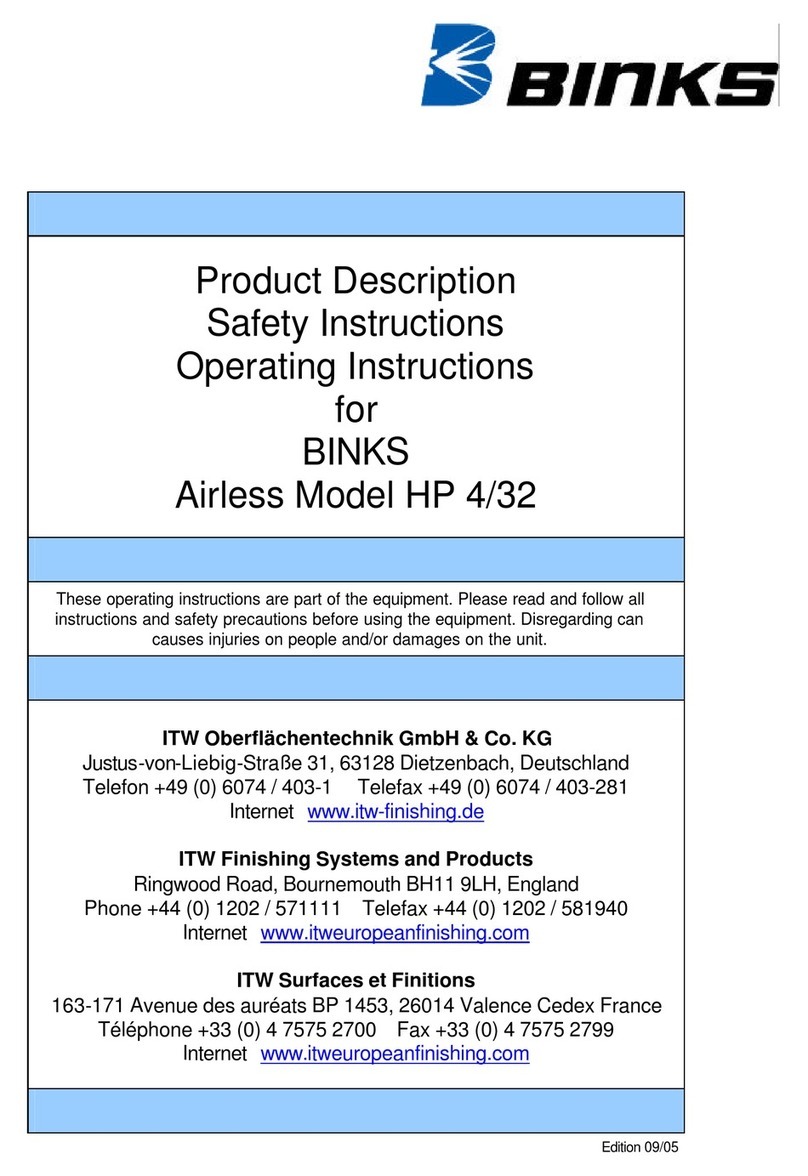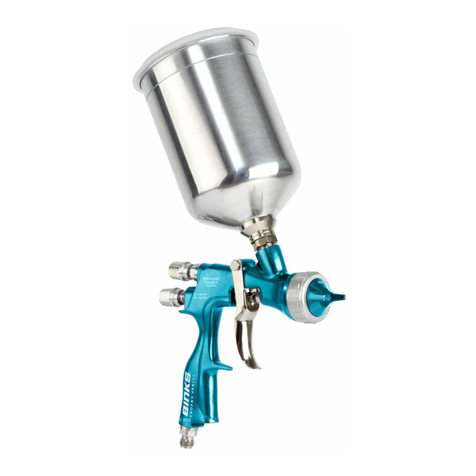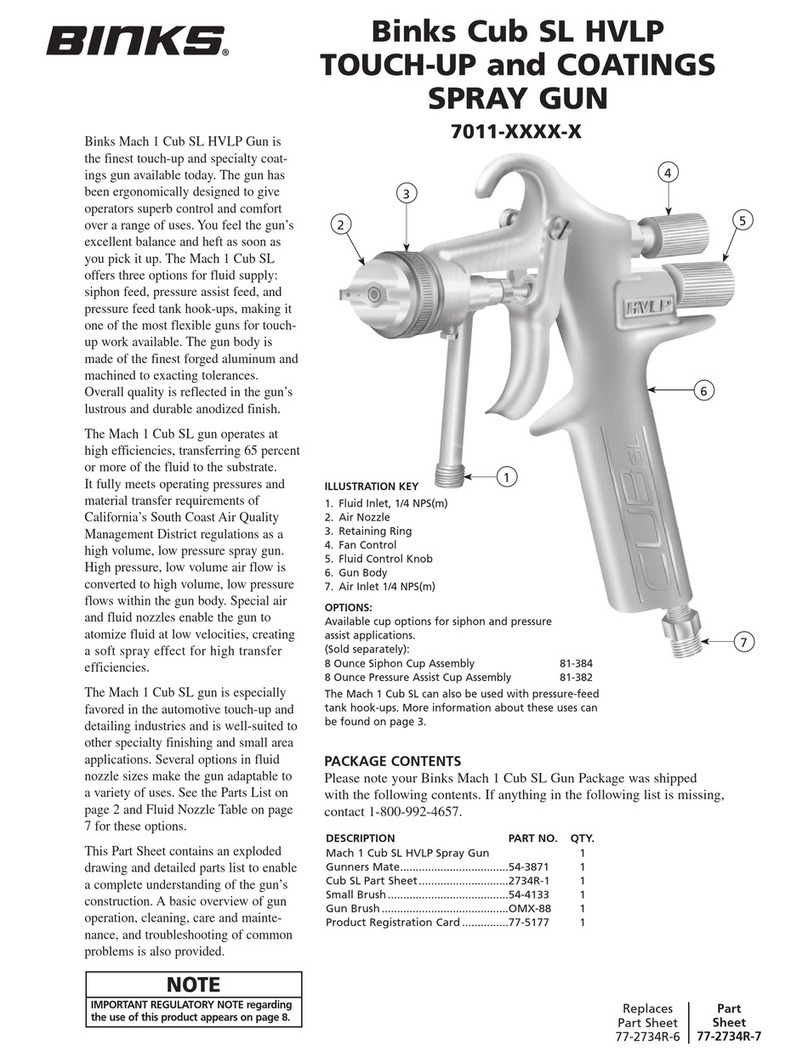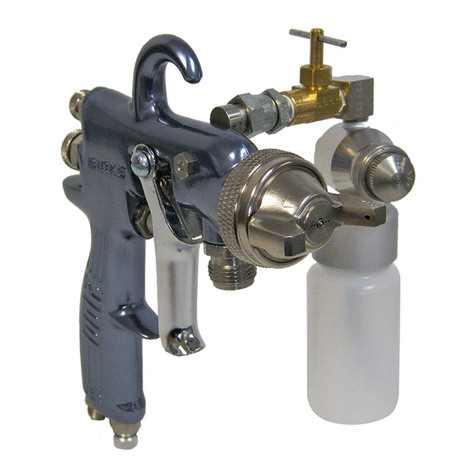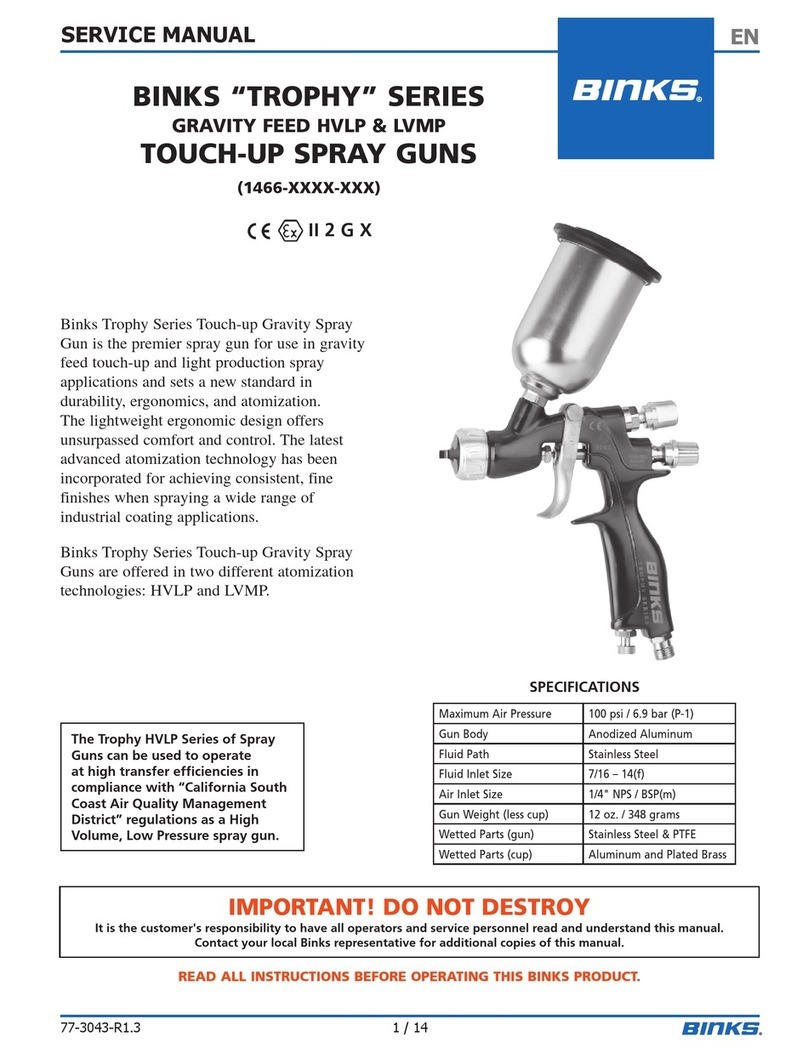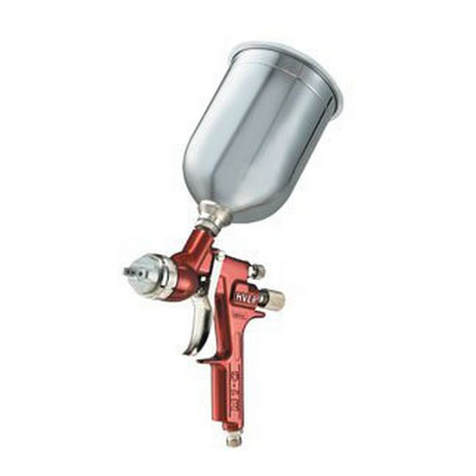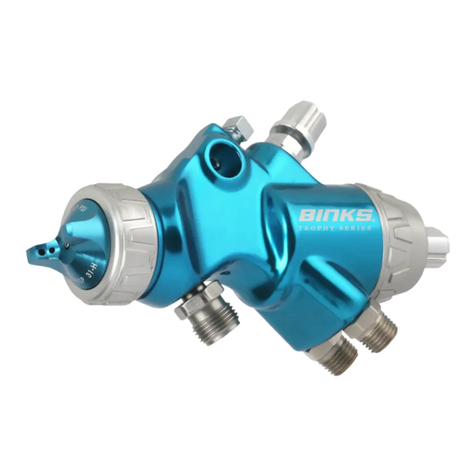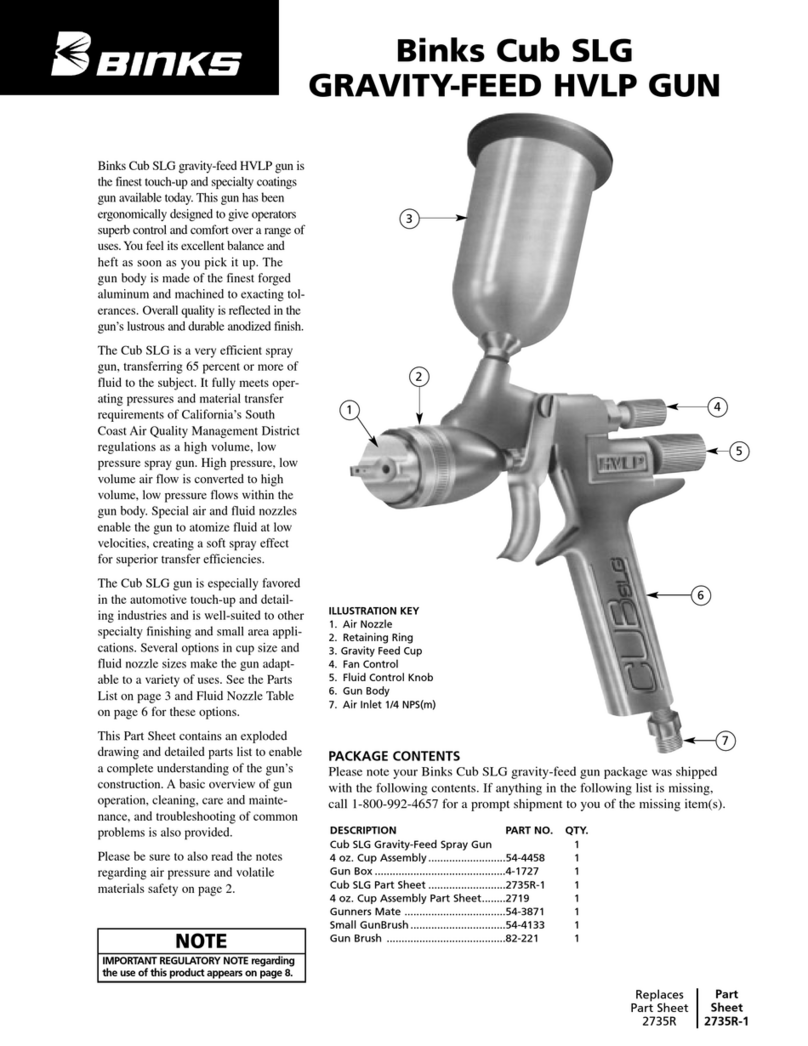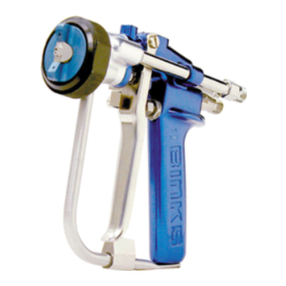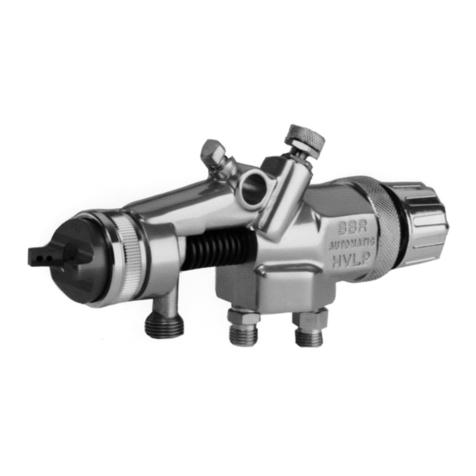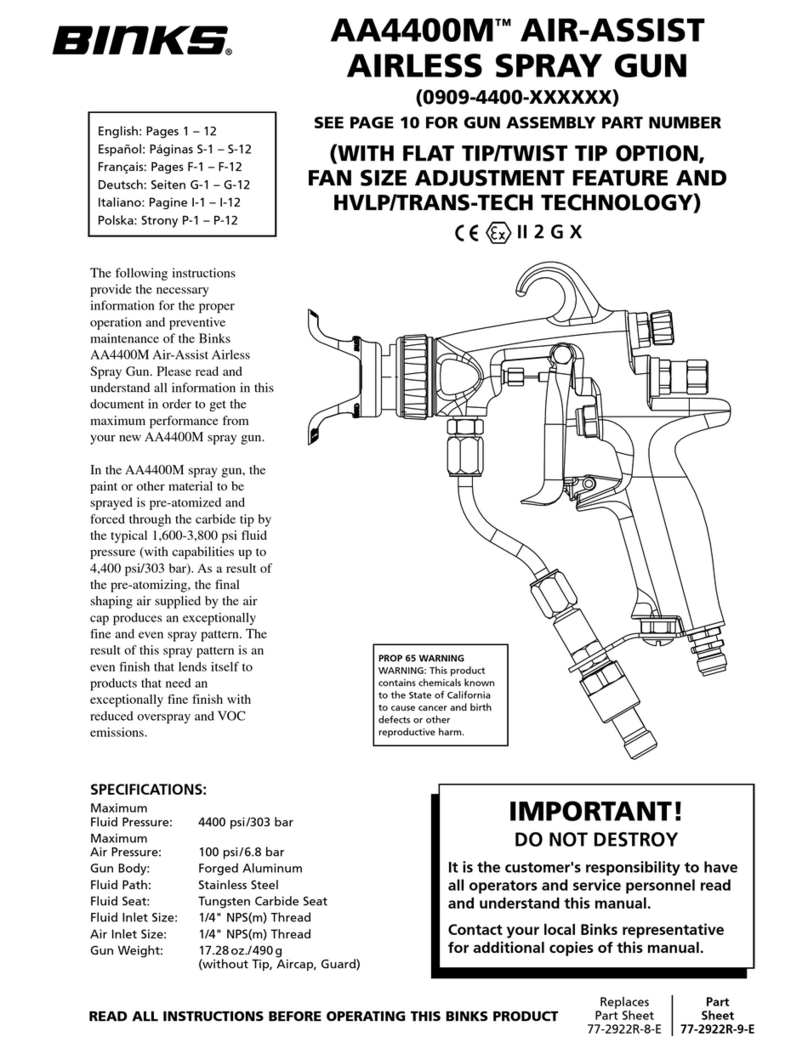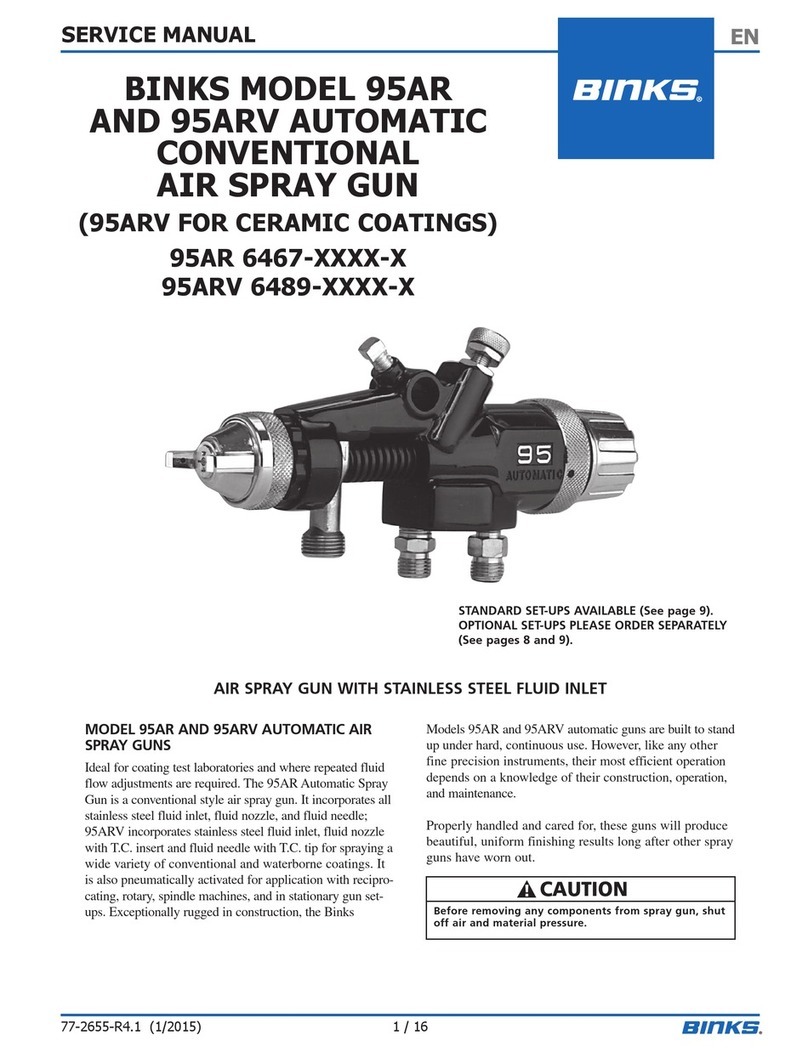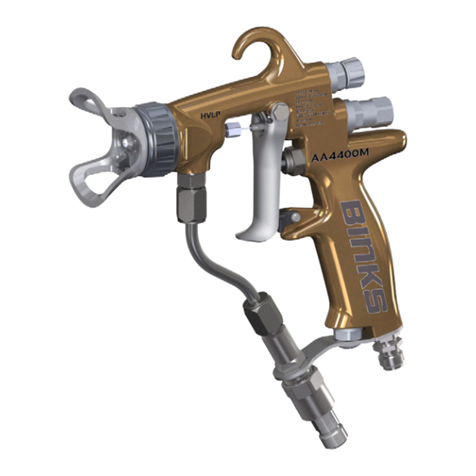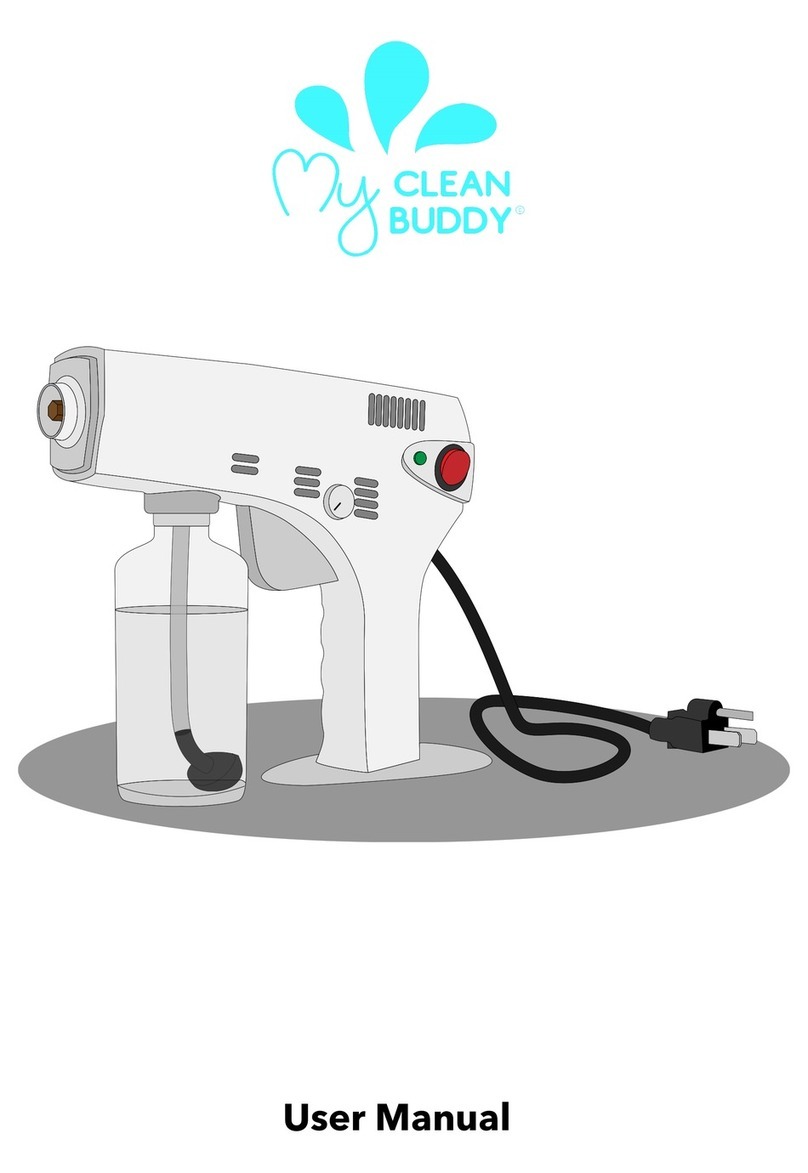
© 2013 Finishing Brands UK Ltd. 7
E
REPLACEMENT OF PARTS
Tip 2003**:
Remove parts 184580 end cap with needle adjusting screw and its lock nut, 160171 inner spring and
160170 outer spring and unscrew tip 2003** from body.
Caution: Replace any worn or damaged parts. Replace tip 2003** and tighten.
Recommended torque 13-14 Nm (115-125 lbf in²).
Fit parts 184580 end cap, 160171 inner spring and 160170 outer spring.
Valve assy 184963 :
Caution: Always turn stem valve 184578 fully counter-clockwise before fitting or removing valve
assembly 184963 from gun body.
Remove valve assembly 184963 from gun body by removing parts 184579 valve body. It’s
recommended to replace the complete air valve if damaged.
Packing 18295:
Remove parts 184580 cap with needle adjusting screw and its lock nut, 160171 inner spring and
160170 outer spring and withdraw needle 1800** and piston 184576, unscrew the seal retainer 180296
and remove the packing 180295. Lubricate new packing with mineral oil, place the packing in front of
the retainer and screw it into gun body. Tighten retainer sufficiently to seal but not to impede free
needle movement. Lightly coat ‘0’ rings 20-4146 & 161030 with mineral based grease.
Fit needle and piston assembly into gun body.
Reassemble parts; 160171 inner spring and 160170 outer spring & 184580 end cap.
Needle 1800**:
Remove parts 184580 cap with needle adjusting screw and its lock nut, 160171 inner spring and
160170 outer spring and withdraw needle 1800** and piston 184576.
Unscrew the locking screw 184573 at the back of the needle collar 184577, unscrew the needle
1800**. Replace the needle if damaged, screw the new needle into the collar until you will leave 1,2
mm free movement to the piston before to operate on the needle collar, this gap can be measured by
maintaining the needle in position shut and measuring the piston movement sliding on it. Tight the
locking screw 184573. Tighten retainer sufficiently to seal but not to impede free needle movement.
Lightly coat ‘0’ ring 20-4146 & 161030 with mineral based grease. Fit needle and piston assembly into
gun body.
Reassemble parts; 160171 inner spring and 160170 outer spring & 184580 end cap.
Piston ‘0’ ring 20-4146 & 161030:
Remove parts 184580 cap with needle adjusting screw and its lock nut, 160171 inner spring and
160170 outer spring and withdraw needle 1800** and piston 184576.
Replace ‘0’ ring 20-4146 & 161030, lightly coat ‘0’ ring with mineral based grease.
Fit needle and piston into gun body. Reassemble parts.
Connectors 184574:
Remove connector 184574 and clean threads in gun body.
Apply a medium strength thread locking/sealing compound to the external threads of the new
connector.
Screw into gun body and tighten. Recommended torque: 14 Nm (125 lbf in).
